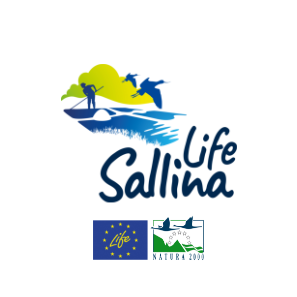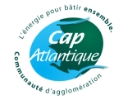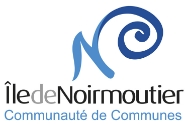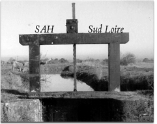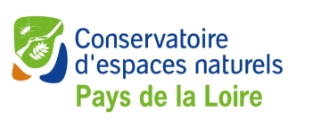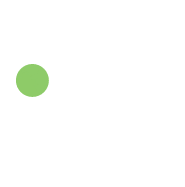contexte
» The site
Originally the Marais Breton was a large bay, the Bay of Brittany, dotted with islands such as the island of Bouin. The Bay of Brittany has gradually filled up under the effect of alluvial deposits and the development of a sandy spit in the Monts countries.
The exposed areas were sheltered from the sea by successive dikes. These vast areas thus reclaimed from the sea, around 35,000 ha, were drained by the creation of ditches and shaped into salt marshes from the 7th century. Salt was the economic engine of the territory between the XIVth and XVIIth centuries.
The continuous siltation of the marshes ended the golden age of salt and activities on the marshes have diversified, notably with the development of livestock farming and eel fishing.
On the Breton Marsh, around 9,000 ha are still supplied today with salt water from Bourgneuf Bay or the Estuary of Life.
The Marais Breton is a mosaic of sub-halophilic meadows and lean meadows of mows, lagoons (former basins of salt marshes), salt meadows, ditches and ponds.
The salted Marais Breton is part of the Natura 2000 and Ramsar site ” Marais Breton, Bourgneuf Bay, Île de Noirmoutier and Monts forest” with an area of 55,800 ha.
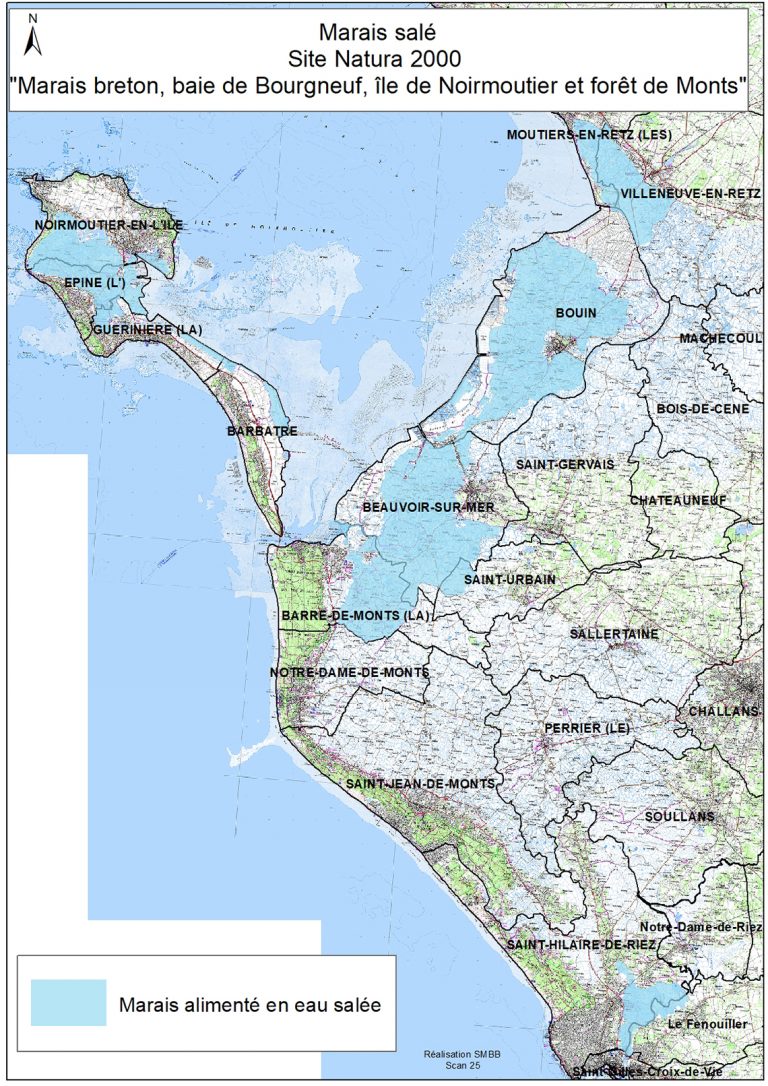
Map of the Breton Marsh supplied with salt water (source: SMBB)
» The biodiversity
The mosaic of environments in the salt marsh and the salinity gradient with marshes exploited for saliculture or shellfish farming, abandoned marshes, a very dense network of ditches and freshwater areas play a key role in nesting. many waders. It is also a privileged area for winter feeding of birds.
About fifty species of birds, covered by the Birds Directive, use the salted Breton marsh, including 20 listed in Annex I to the Directive (strict protection).
The Marais Breton in its part supplied with salt water is a major site for several species:
- The Pied avocet (Recurvirostra avosetta): 20 to 30% of the French breeding population (270 to 488 pairs in 2015) and 10 to 15% of the wintering national
- The black-winged stilt (Himantopus himantopus): approximately 15% of the breeding population French Bluethroat (Luscinia svecica namnetum): about 2% of the French breeding population
- The black-tailed godwit: About 60% of the French breeding population of the continental subspecies (Limosa limosa limosa).
The site is also of particular importance for nesting the Northern Lapwing (Vanellus vanellus, 7% of the national population on the salt marsh), the Common Redshank (Tringa totanus, 50 to 60% of the national population) and the Northern Shoveler (Anas clypeata , 60 to 70% of the national workforce).
For wildlife we can also cite the European Eel (Anguilla anguilla), still very present on the salted Breton Marsh and the Dark Spreadwing (Lestes macrostigma) with a population on the marshes from Daviaud to La Barre de Monts.
For the flora, the Sea Wormwood (Artemisia maritima) is mainly present on the marshes of Life
The site hosts at least one Tolypelle saline (Tolypella salina) station on the Millac marsh.
» Socio-economic activities
The salted Marais Breton is dominated by extensive livestock farming. Natural meadows are valued mainly by herds of suckler cows or by mowing. Breeders are the main actors in the maintenance of tertiary ditches and the hydraulic management of the salt marsh.
Shellfish farming (oyster farming and mussel farming) is very present on the oyster polders near the bay of Bourgneuf which is one of the most important shellfish farming area on the French coast.
Lastly, around twenty salt workers have been operating salt marshes with several installations in recent years.
» The threats
The salted Marais Breton is rather well preserved.
The main threats are the development of invasive exotic species (notably the Ragwort, Baccharis halimifolia), the degradation of the hydraulic network and the intensification of agricultural practices on the prairies or the reversal of the prairies.
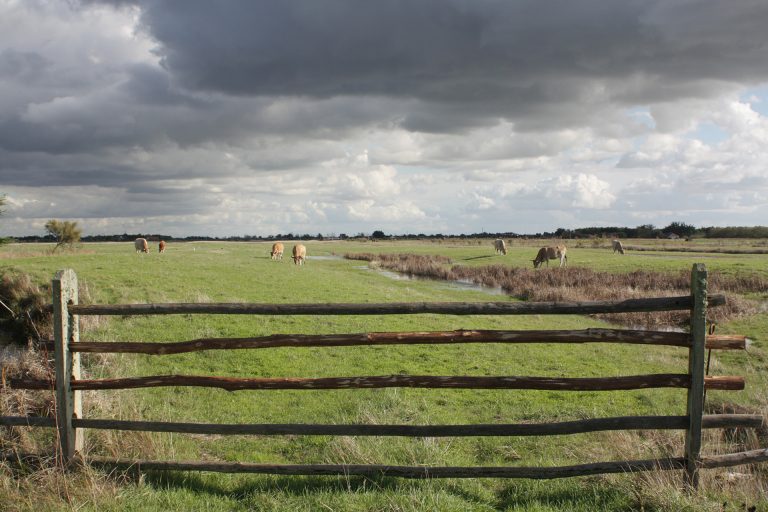
Breeding in the salted Breton Marsh (photo credit: Pierre Le Lann)
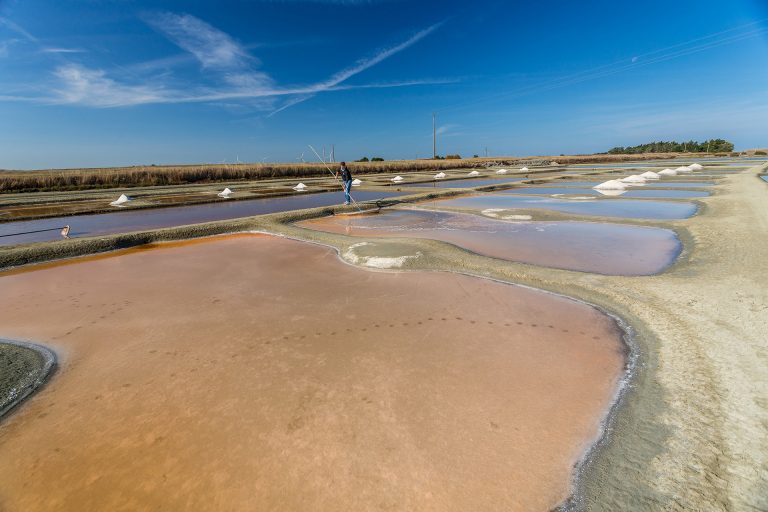
Salt in salted Marais Breton (photo credit: Stéphane Grossin)
Our actions
On the Marais Breton, the main actions planned are:
- Mapping of natural habitats and of community interest
- Improvement of knowledge on breeding populations of Eurasian avocet, in particular on the Marsh of Millac
- Sensitization of the general public and schoolchildren to the biodiversity of salt marshes: production of a film, intervention in school environments to educate 400 middle school students, holding stands at local events, etc. Sensitization of socio-economic actors: 4 technical days for socio-professionals in the Breton Marsh are planned
- Restoration of the Millac marsh pilot site: ecological restoration, creation of nesting sites for the European avocet, fight against invasive species
Sites pilotes
For the Marais Breton, the pilot site selected is the Millac marsh.
With a surface area of 318 ha, it is located in the municipalities of Moutiers-en-Retz and Villeneuve-en-Retz in Loire-Atlantique.
It was chosen because of the strong abandonment of the site (little use and little management of the basins, significant siltation, development of the Ragwort in trees) and the will of the local actors to restore it, in particular elected officials of the commune from Villeneuve-en-Retz.
30 pools belonging to 13 owners will be restored.
The actions consist of finding a more functional salt marsh with the cleaning of the main network and ditches supplying the basins.
Within the basins, work promoting biodiversity will be undertaken such as the creation of nesting islands, the installation and management of small hydraulic structures, the cleaning of basins, the restoration of humpbacks, etc.
Actions against invasive exotic plants and rodents will also be carried out.
All of the actions will make it possible to rediscover a more functional and quality environment, in particular with the return in numbers, we hope, of the Pied avocet.
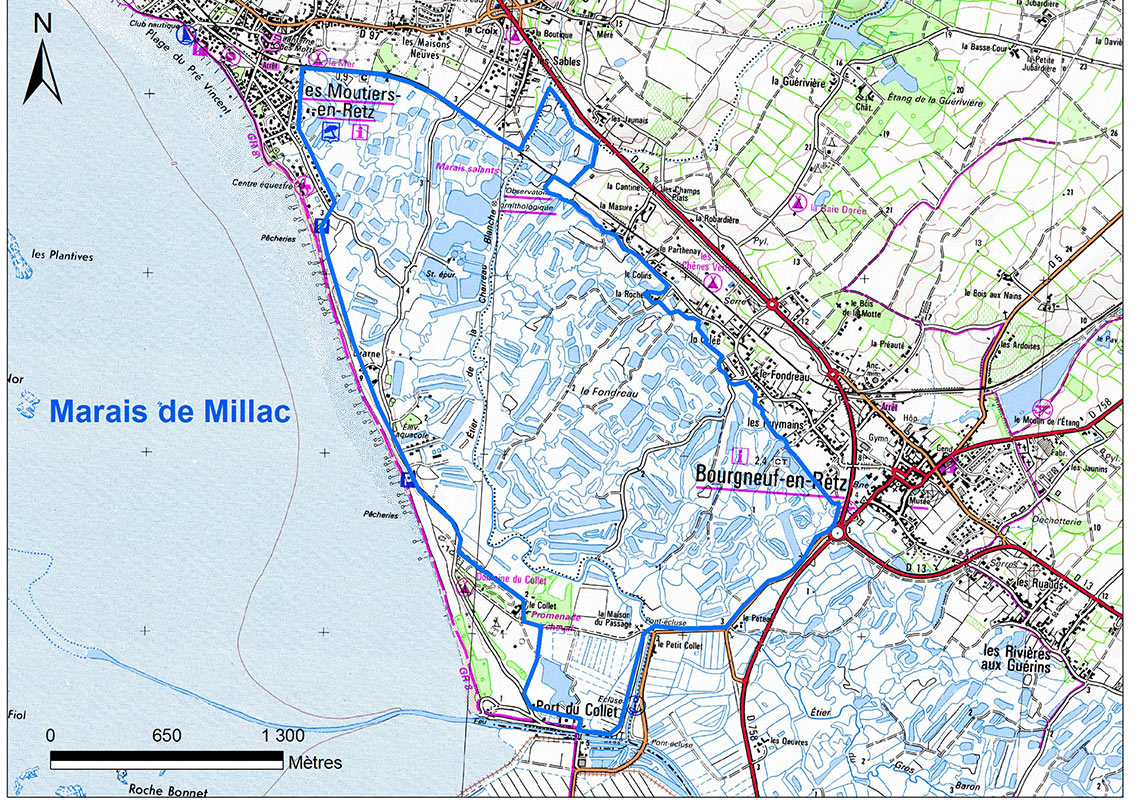
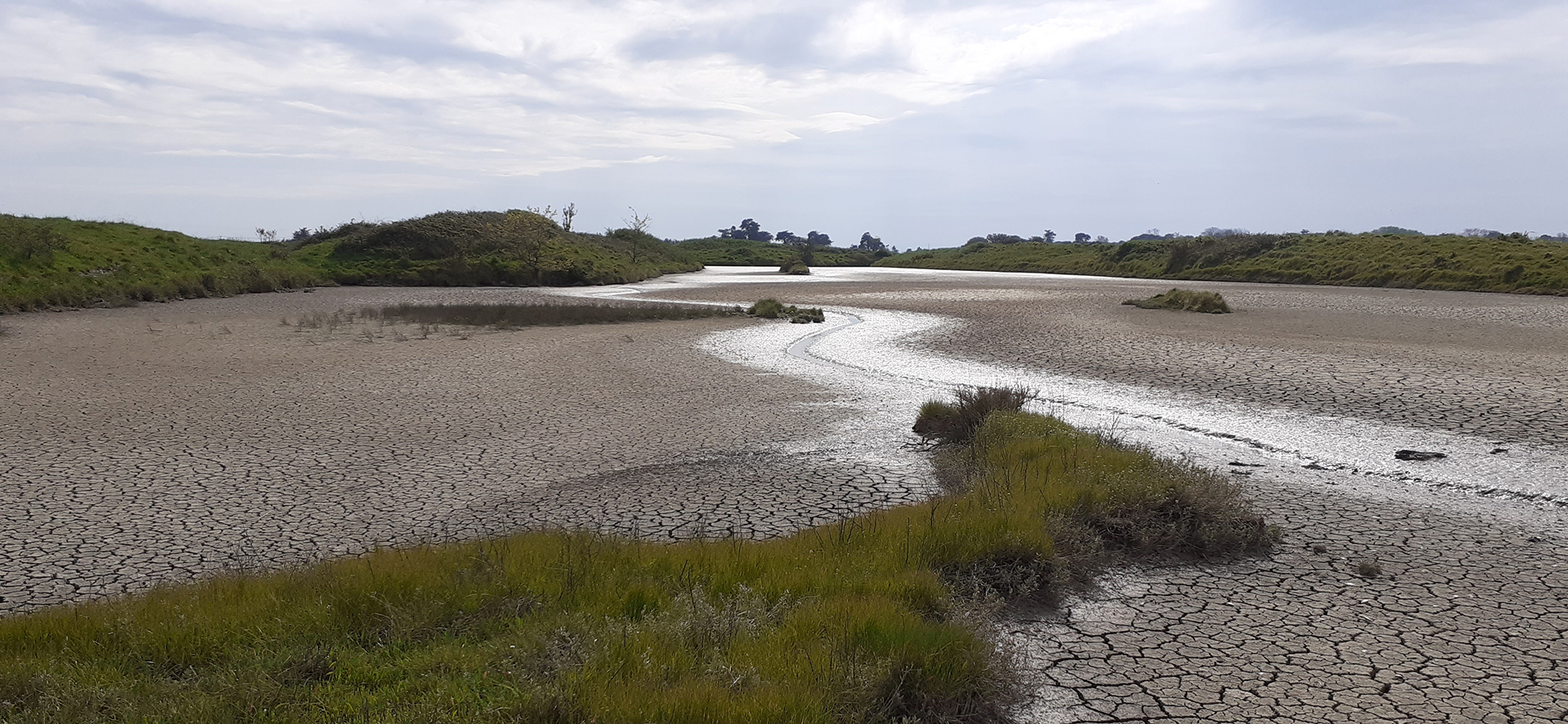
A basin in the Millac marsh (Photo credit: SAH)
Results
The initial reports carried out on the Millac marsh show that:
- Regarding lagoon habitat, the state of the 30 basins is very heterogeneous with a state of conservation ranging from good (presence of seagrass beds, gentle slopes) to very degraded.
- Regarding the Pied Avocet, there are 28 to 43 pairs in the study area, but only 1 likely breeding pair out of the 30 pools that will be restored. The Avocets are currently present in insecure basins with a low number of younglings.
The potential for restoring the targeted basins in the Millac marsh is therefore significant.


